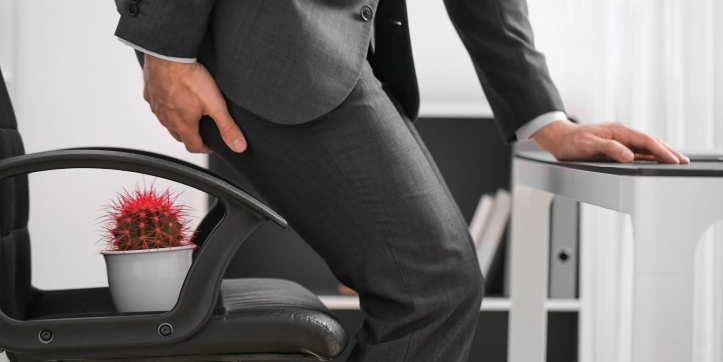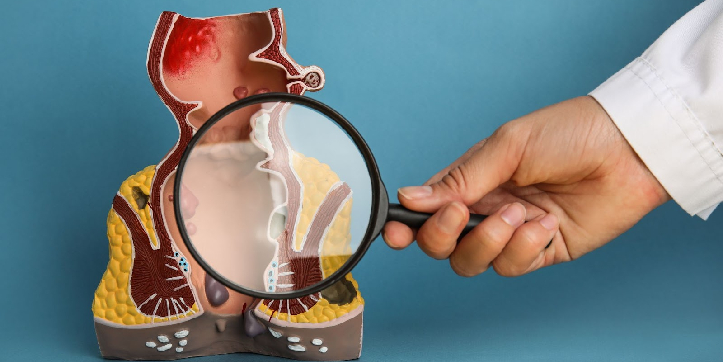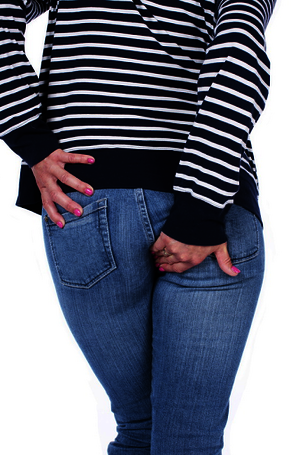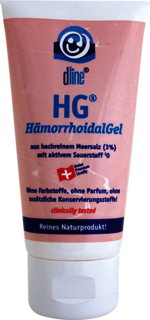How helpful is a hemorrhoid gel in Switzerland?

They itch, hurt, and may even tear: hemorrhoids. When the symptoms are mild in the external skin area, local treatment is much simpler. However, if hemorrhoids occur in the area of the anal opening (anus), it is essential to consult a specialist in hemorrhoids (proctologist). If bowel movements become a torment and the symptoms persist in daily life, the suffering is significant. There are many products and types of products for this issue. Here, we want to introduce you to a natural product for the external skin area. A high-quality hemorrhoid gel from Switzerland can provide relief to those affected, alleviating both itching and unpleasant odors quickly and effectively.
What are hemorrhoids?

Every person has hemorrhoids, which are blood vessels located at the anus. They are spongy structures grouped inside the rectum, around the anus. Together with the ring-like sphincter muscles, they "seal off" the rectum.
The rectum is approximately 20 cm long and is the last section of the large intestine. The anal canal is lined with anal mucosa (anoderm) and can be between 3 and 6 centimeters long. It contains many nerve fibers that transmit signals to the body, helping, for example, to recognize the consistency of the stool. They also signal when the bowel needs to be emptied.
Afterward, the muscle tightens again, and the blood flows back into the hemorrhoids. This seals off the anus again, preventing stool from exiting uncontrollably. This emptying and refilling of the hemorrhoids usually occur unnoticed.
Symptoms occur only when the blood vessel cushions enlarge. This condition is referred to as hemorrhoidal disease, which is a varicose or nodular swelling or enlargement of a blood vessel cushion (erectile tissue) located between the rectum and the sphincter muscle of the anus. The term "hemorrhoids" is often used as a synonym for this condition for simplicity.
To pass stool, the sphincter muscle must relax, allowing the blood vessels to empty. This eventually leads to the expulsion of stool.
Enlarged hemorrhoids can cause discomfort.
What problems can hemorrhoids cause?
Typical symptoms of enlarged hemorrhoids include itching, pain during bowel movements, and a moist sensation. Additionally, bright red blood traces on toilet paper can indicate a hemorrhoidal condition. This is because the delicate blood vessels may be damaged due to pressure during bowel movements or from very hard stool.
How do problems with hemorrhoids develop?

The most common cause of hemorrhoidal conditions is significant pressure. This can occur, for example, in the case of chronic constipation, where the stool is very hard and difficult to pass. Individuals with chronic constipation may need to strain significantly during bowel movements.
A similar effect can be observed in people who spend a lot of time on the toilet, perhaps reading a newspaper. Essentially, various activities that exert a lot of pressure on the abdominal area can trigger hemorrhoids since the anal sphincter has to withstand the pressure.
This includes activities such as heavy weightlifting, chronic coughing, and obesity. Diseases such as heart failure or liver cirrhosis can also be risk factors. They cause increased blood pressure in the abdominal area, leading to blood accumulating in the hemorrhoids.
Professions that require prolonged sitting can also contribute to the development of hemorrhoidal conditions.
Genetics should not be overlooked either. Some individuals are more susceptible to hemorrhoids than others, and scientists attribute this to a hereditary predisposition. The structure of connective tissue is genetically determined from birth.
If the quality of connective tissue is less favorable, the risk of experiencing enlarged hemorrhoids increases. This is especially true with advancing age when connective tissue naturally loses firmness.
How Pressure Can Trigger Hemorrhoidal Problems
Due to the increased pressure resulting from the factors mentioned, blood vessels expand. As a result, the hemorrhoidal tissue enlarges further. Additionally, the high pressure makes it difficult for blood to drain properly.
The continuously elevated volume of vessels causes them to lose elasticity progressively. This leads to the formation of pouches and nodules more rapidly.
How can a hemorrhoid gel from Switzerland provide relief?

Hemorrhoidal conditions can be divided into four stages:
1. Hemorrhoids are enlarged but neither palpable nor visible.
2. The cushions protrude during bowel movements but retract on their own afterward.
3. Hemorrhoids can only be manually pushed back.
4. The significantly enlarged cushions cannot be pushed back and are permanently protruding.
In the first two stages, hemorrhoids can often be successfully treated conservatively. On one hand, dietary adjustments are recommended. A diet rich in fiber and adequate fluid intake are crucial to prevent constipation and keep the stool soft.
On the other hand, treatments with medical preparations such as ointments and gels are available. They primarily soothe the skin, alleviating hemorrhoidal symptoms.
How does the HG® hemorrhoid gel from Switzerland work?

The HG® HemorrhoidalGel is water-based with sea salt and contains "active oxygen" (singlet oxygen) through a sophisticated manufacturing process with electricity. The skin and mucous membrane in the outer anal area quickly calm down, forming a protective barrier against further annoying symptoms. It provides relief for unpleasant itching and burning. Additionally, the hemorrhoid gel from Switzerland covers a broad antimicrobial spectrum. The application can be used as often as necessary, and all ingredients are biologically degraded without residues, ensuring no impact on wastewater and ecosystems.
For stabilizing the skin barrier (if it becomes too dry during therapy), a thin three-phase ZCR®-ZincCream film is recommended in the anal area and between the chapped buttocks.
Practical tip: You can achieve optimal effectiveness with the HG® HemorrhoidalGel by applying this active sea salt-oxygen gel thinly (about 1 mm) to a non-woven compress and placing it between the buttocks on the anus.
For ZCR®-ZincCream, it would be most effective if applied in a very thin layer to the non-woven compress and applied in the same way as the HG® HemorrhoidalGel.
Application is done daily, if needed several times – ideally, after cleaning the affected skin area. Use a clean glove for application and apply a visible gel film to the affected area. Then, cover it with a non-woven compress and secure it with elastic underwear or stretch shorts.
Once the gel has absorbed/dried, a smart, whitish salt film forms. This can be easily wiped off with a shower or a wet cleansing cloth.
Ensure that the product does not come into contact with colored textiles, as it is an active oxygen product and may bleach colors. Wash the textile immediately with lukewarm water after contact.
In the dry state, there is no "bleaching" of textile colors. Many textile dyes are not sensitive to active oxygen (individually).
We are happy to provide comprehensive advice on the application of our HG® HemorrhoidalGel and other products. Please contact us by phone or send us an email.
Important note:
For internal hemorrhoids, approved medical devices or medicines must be used. In this case, we recommend products based on the same foundation from ActiMaris®-WundGel.
